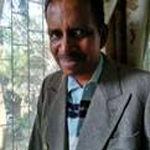
Sunday Snippets: Imran Khan’s legacy on Pakistan
 By Venkatesh Raghavan
By Venkatesh Raghavan
The firing incident in which former Pakistan Prime Minister Imran Khan sustained leg injuries reminded me of the ups and downs faced by this legendary cricketer turned politician over a span of four decades and odd. My early memories were about him being able to reverse swing the ball on dead sub-continent wickets both in Lahore and Karachi. When India was playing Pakistan on their home turf, the keen tussle between our legendary opener Sunil Gavaskar and all-rounder Imran Khan was something of a treat to watch.
In fact, many teams that played in Pakistan also witnessed the capabilities of their pacers that included Imran Khan and Wasim Akram. They could make the ball talk even on a dead or flat batting wicket. Imran’s smooth run-up to the wicket before delivering the ball was a picture of grace and elegance personified. Much later, during the World Cup fixtures of 1987, Imran Khan announced his decision to retire from cricket following the event coming to an end.
I recall the Pakistani audiences chanting, “Chalte chalte, mere ye geet, yad rakhna, kabhi alvida na kehna” (never say goodbye) in response to Imran’s decision to retire from cricket, when he was active on the bowling crease. To the delight of the Pakistani cricket fans, Imran repealed his decision soon afterwards. It evoked a mixture of some snide remarks as well as a feeling of relish from his fans.
Cricketing history vindicated Imran’s decision after Pakistan went on to win the cricket World Cup held in Australia, in 1992 under his able captaincy. This ushered him into the hall of fame reserved for all-time cricketing greats. Years later, Imran decided to enter politics and floated his own political party that entered the race against arch-rivals, Benazir Bhutto and Nawaz Sharief. It seemed to be going sound for him as he was using adherence to Islam as his trump card. However, all of a sudden, his romantic involvement with a European lady, Sita White and her confession to having an offspring from Khan did the rounds on media channels and toppled him from being in contention for the hot seat.
After nearly two decades of struggle, Khan who led Pakistan Tehreek-e-Insaf (PTI) managed to capture power after winning the elections with the help of electoral allies against his main rival and challenge, namely the Pakistan Democratic Movement (PDM). Soon after Imran became the Pakistan Prime Minister, the joke was doing the rounds in social media circles: “Imran Khan is the Prime Minister of Pakistan. Soon Sunil Gavaskar should be made India’s Prime Minister. They both can be expected to get along well as former sports colleagues.”
In the early stages of his tenure as PM of Pakistan, there were whispers doing the rounds that Imran had the full backing of the Pakistani army. The honeymoon PTI reportedly had with the army ended abruptly with a call for a no-confidence motion against Imran’s coalition government by mid-March this year. In the midst of the political storm, with media platforms pointing out that no civilian government in the history of independent Pakistan has ever been allowed to complete its full five-year term, Imran decided to take the battle to the streets of Pakistan to mobilize popular support against his political rivals.
As Imran continued unabated in his attempt to win the struggle for political power in the long run, when fresh elections were slated to be held, Pakistan’s economy continued to suffer a downslide and disgruntled elements in both camps stayed aloof. With the recent assassination attempt on Imran Khan, Pakistan seems to be headed to its former dark days when the army overtly exercised control. On introspection, one feels inclined to ask whether Imran Khan could have served the country better as Pakistan’s cricket coach.





